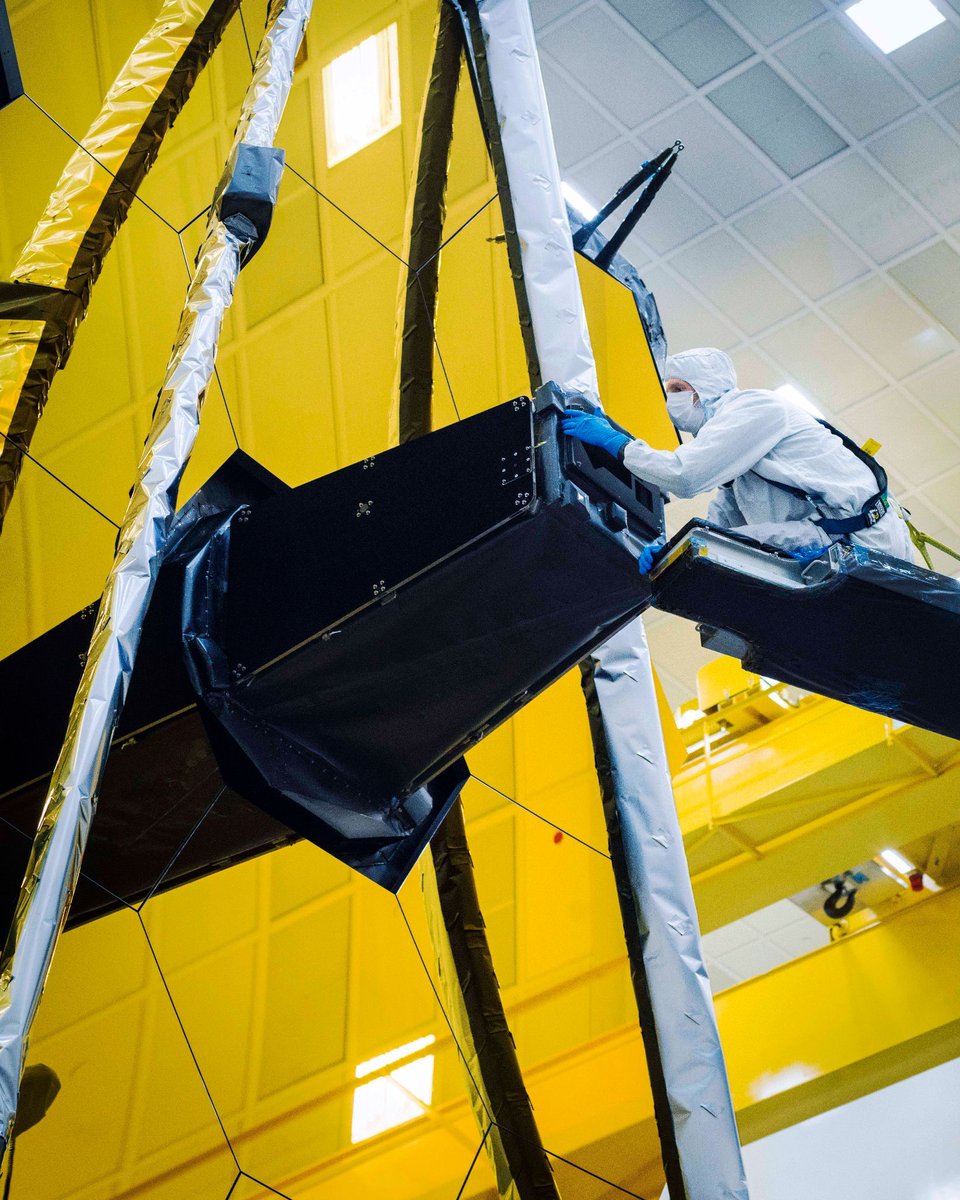
We've been hearing you loud and clear: Why doesn't Webb have cameras for its journey to #UnfoldTheUniverse? It sounds like a no-brainer, but there's more to it than meets the lens. Thread ⬇️ 

1. Light 💡
Our gold-coated mirrors were photogenic on Earth, but the mirror side of Webb is pitch dark in space. Meanwhile, the other, Sun-facing side of Webb is so shiny that cameras there would have glare & contrast issues.
Our gold-coated mirrors were photogenic on Earth, but the mirror side of Webb is pitch dark in space. Meanwhile, the other, Sun-facing side of Webb is so shiny that cameras there would have glare & contrast issues.
2. Power 🔌
We would have to run cables and power out to cameras on Webb, and the power balance on the cold side of Webb is especially delicate. More cables adds more of a threat of heat and vibration transfer through the wires, which could impact image quality.
We would have to run cables and power out to cameras on Webb, and the power balance on the cold side of Webb is especially delicate. More cables adds more of a threat of heat and vibration transfer through the wires, which could impact image quality.
3. Temperature 🥶
A camera that would work at the cryogenic temperatures on the cold side of the sunshield would have to be specially designed. Plastics fall apart, shrink, and crack, and glues don’t hold together.
A camera that would work at the cryogenic temperatures on the cold side of the sunshield would have to be specially designed. Plastics fall apart, shrink, and crack, and glues don’t hold together.
4. Complexity 🛠️
Webb is big and changes configuration during deployments. Where do you put cameras? How many? Narrow-field ones add complexity; wide-field ones don’t give detailed information.
Webb is big and changes configuration during deployments. Where do you put cameras? How many? Narrow-field ones add complexity; wide-field ones don’t give detailed information.
So how *do* we know a deployment is successful? Our spacecraft has mechanical, thermal, and electrical sensors, which provide telemetry to our ground teams. Mission control at @SpaceTelescope also has a special visualization tool to check the status of the telescope. 

📸 Everything clicking? Read more about the considerations behind why we don’t have engineering cameras onboard here: blogs.nasa.gov/webb/2022/01/0… #UnfoldTheUniverse
And as for the telescope itself — don’t worry, we removed the “lens cap”:
And as for the telescope itself — don’t worry, we removed the “lens cap”:
https://twitter.com/NASAWebb/status/1415694400626348035?s=20
• • •
Missing some Tweet in this thread? You can try to
force a refresh











